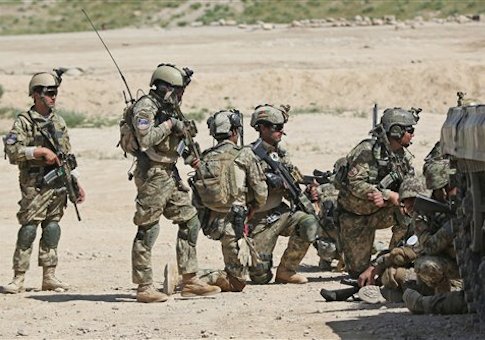After spending $626 million in taxpayer funds to arm the Afghanistan security forces, U.S. government inspectors have discovered that large portions of the weapons have gone missing and have likely fallen into the hands of militant insurgents, according to a new report.
In addition to these lost or misplaced weapons, government inspectors found that the United States has over-armed the Afghan forces, creating a glut of weaponry that is only expected to grow larger as the Afghan National Security Forces (ANSF) reduces its numbers.
Due to the Afghan government’s inability to properly account for and store these arms, U.S. inspectors are warning that the American weapons could fall into the hands of insurgents—a problem made more likely by the Pentagon’s lack of authority to recapture lost weapons.
"Given the Afghan government's limited ability to account for or properly dispose of weapons, there is a real potential for these weapons to fall into the hands of insurgents," the Special Inspector General for Afghanistan Reconstructions (SIGAR) wrote in a report released early Monday.
Pentagon "officials told SIGAR that they do not currently have the authority to recapture or remove weapons that have already been provided to the ANSF," the report found.
This means that excess weapons—including rifles, pistols, machine guns, grenade launchers, and shotguns—that have not been tracked or stored properly could wind up anywhere.
"This issue will be compounded as the number of ANSF personnel decreases to lower levels in the coming years," according to the report. "Without confidence in the Afghan government’s ability to account for or properly dispose of these weapons, SIGAR is concerned that they could be obtained by insurgents and pose additional risks to Afghan civilians and the ANSF.
The Pentagon has spent at least $626 million arming with Afghan forces with some 747,000 weapons and auxiliary equipment, including around 465,000 small arms weapons such as AK-47s and M16s.
Yet the Afghan government, which has been accused of corruption and malfeasance by SIGAR and others, has failed to provide proper oversight on the U.S. weapons.
"Controls over the accountability of small arms provided to the ANSF are insufficient both before and after the weapons are transferred," SIGAR found, explaining that the problem begins with improper oversight on the U.S. side.
SIGAR has identified multiple similar problems with the ANSF, including their inability to use U.S. machinery and weapons and the infiltration by insurgents into the security forces.
In addition to the oversight problem—which has led to the disappearance of weapons—the United States was found to have over-armed the Afghans.
"More than 112,000 weapons provided to the ANSF exceed requirements and the scheduled reduction in ANSF personnel by 2017 is likely to result in an even greater number of excess weapons," SIGAR found.
The "poor record keeping" by the Afghan National Army (ANA) and the Afghan National Police (ANP) has negatively impacted the Pentagon’s "ability to monitor weapons after transfer to the ANSF," as is legally required by Congress.
The faulty record keeping, for instance, has led to the transfer of 83,184 more AK-47s than is needed, according to the report.
The two databases that are used to track weapons are not linked to one another and often records in the systems do not match each other.
"Some records were duplicated, and some records were incomplete," SIGAR found.
This has resulted in the inability to track and locate weapons.
Forty-three percent of the weapons in one system—or 203,888 of 474,823 total weapons in the system—had missing information or were duplicates, according to the report.
Many thousands of serial numbers used to track weapons were found to have been "repeated two or three times" in the system, "meaning that there are duplicate records of weapons shipped and received," SIGAR found.
More than 50,000 weapons entered into the two databases were found to have no shipping or receiving dates at all.
When SIGAR inspected the ANA’s Central Supply Depot it discovered that 551 weapons that had been documented on the Afghan government’s "property book" did not actually jibe with a physical count of the weapons in the inventory.
Similar discoveries were made at other Afghan facilities.
